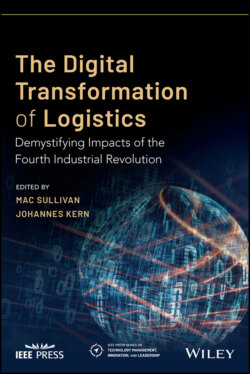Читать книгу The Digital Transformation of Logistics - Группа авторов - Страница 90
Konica Minolta's RPA Roadmap
ОглавлениеKonica Minolta implemented RPA using the following roadmap:
1 Train a country RPA developer.
2 Identify the highly repetitive business processes that can make use of RPA from hundreds of processes and prioritize for which to develop a solution first.
3 Form a business technology communication unit to perform change management education.
4 Convert existing workflow (normal human can read) to become RPA workflow (RPA developer can read).
5 Create metrics to measure ROI in terms of calculated full‐time employee (FTE) labor hours.
6 Communicate results to management in global and regional offices.
7 Investigate and integrate RPA into each of the different business units.
8 Expand RPA locally by training more local RPA champions who can help to spread knowledge and increase the number of RPA processes.
9 Multiply the power of RPA by combining it with Excel macros.
10 Distribute messages and hold further training to create an RPA culture within offices.
11 Continue to invest in upskilling the team and get them certified.
Processes that Konica Minolta has built RPA bots for include updating shipping schedules and generating customer consumption reports. More examples can be found in the chart below that demonstrates how Konica Minolta deployed bots across various department functions (Figures 5.1 and 5.2).
In 2018, over 55 automatic bots were developed and deployed, with a similar number in the work pipeline. Konica Minolta could save around 19 000 hours in 2018 and expects to save 33 000 hours in the fiscal year 2019. The goal here was not to replace staff through RPA but to add more business value to their customers. The company's RPA journey gives invaluable insights to how automation can change a company's culture and the ways its employees work.
Though Konica Minolta is not a logistics company, this roadmap would look extremely similar if the implementation was happening in one. Identifying highly repetitive tasks, converting workflow to one that an RPA developer can read, forming a team to manage adoption and training, and creating metrics to quantify ROI would be standard steps in any company's RPA journey whether they provide logistics services or technology solutions. The positive results and hours saved that Konica Minolta have experienced since deploying their first bots therefore could be shared by logistics companies since many of the functions that the bots handle will be the same regardless of the industry that they serve. For example, Konica Minolta's use of bots for creating market data reports, generating quality assessment reports, and managing inventory could very easily be applied to a logistics provider as these functions will generally look quite similar across different organizations. In addition to this, Konica Minolta used RPA specifically to update their shipping schedules, a task that is done daily in many logistics companies. Later on in this section, we will look at an example of how DHL have seen equally impressive results to Konica Minolta's during their own RPA journey.
Figure 5.1 Deploying RPA in various operations throughout the value chain.
Source: Konica Minolta © (2020).
Figure 5.2 Internal RPA training course participants.
Source: Konica Minolta © (2020).
